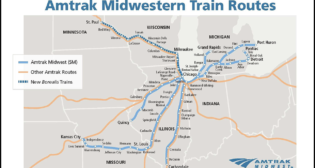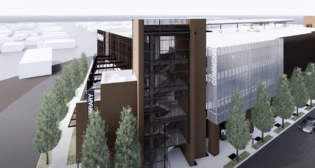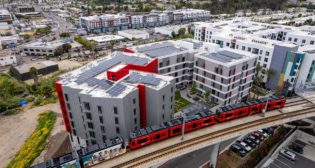
Transit Briefs: BART, MARTA, Amtrak, VIA Rail, WMATA, OC Transpo
Written by Carolina Worrell, Senior Editor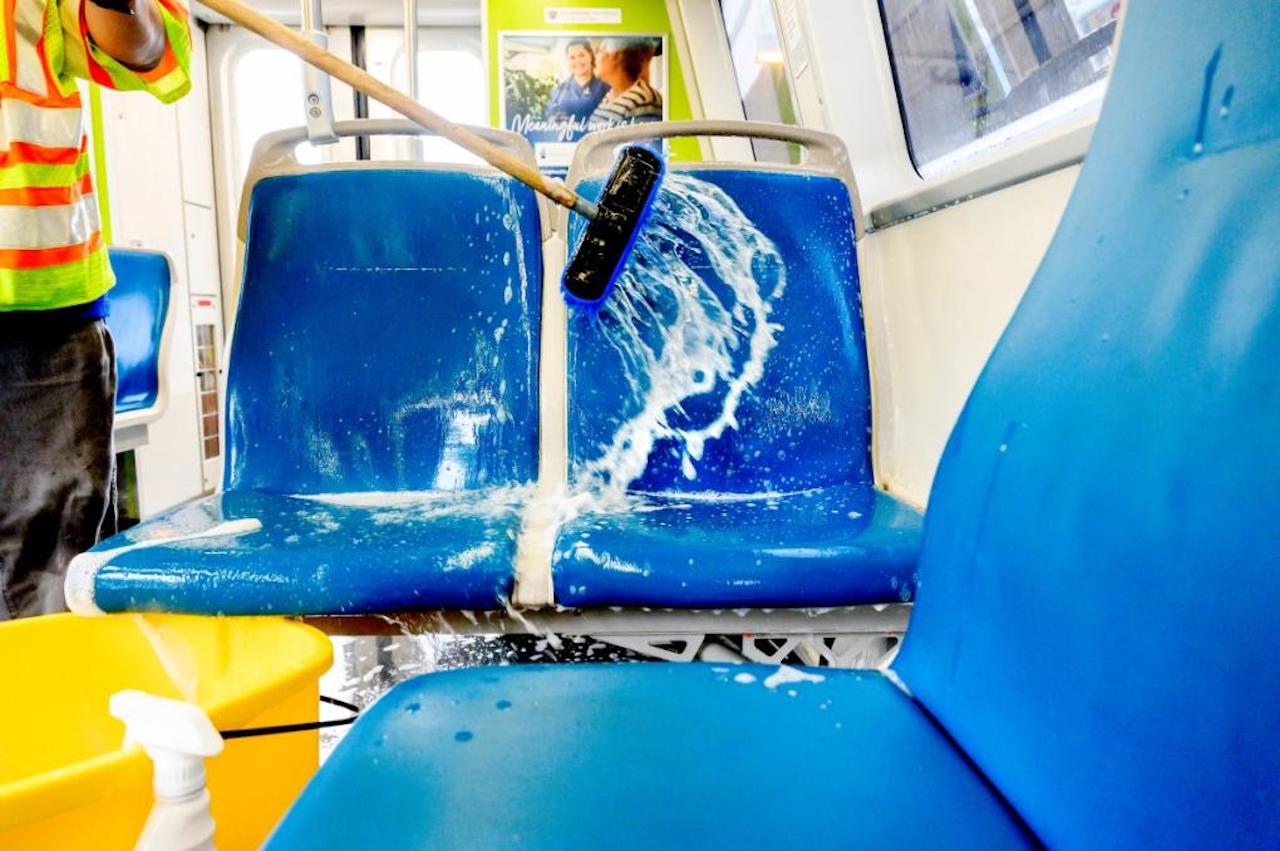
BART photo
Bay Area Rapid Transit (BART) announces new Safe & Clean plan. Also, Metropolitan Atlanta Rapid Transit Authority’s (MARTA) railcars head for Atlantic Ocean as part of Department of Natural Resources (DNR) Reef Project; Amtrak eyes restoring 63 more cars to active fleet; VIA Rail Canada Inc. (VIA Rail) increases service between Ottawa and London this fall; the Washington Metropolitan Area Transit Authority (WMATA) adds more rail service; and OC Transpo faces a multimillion-dollar budget deficit.
BART
To keep its trains “cleaner than ever” and to provide the “best service yet—from departure to destination,” BART announced Sept. 7 its new Safe & Clean plan, which includes the following:
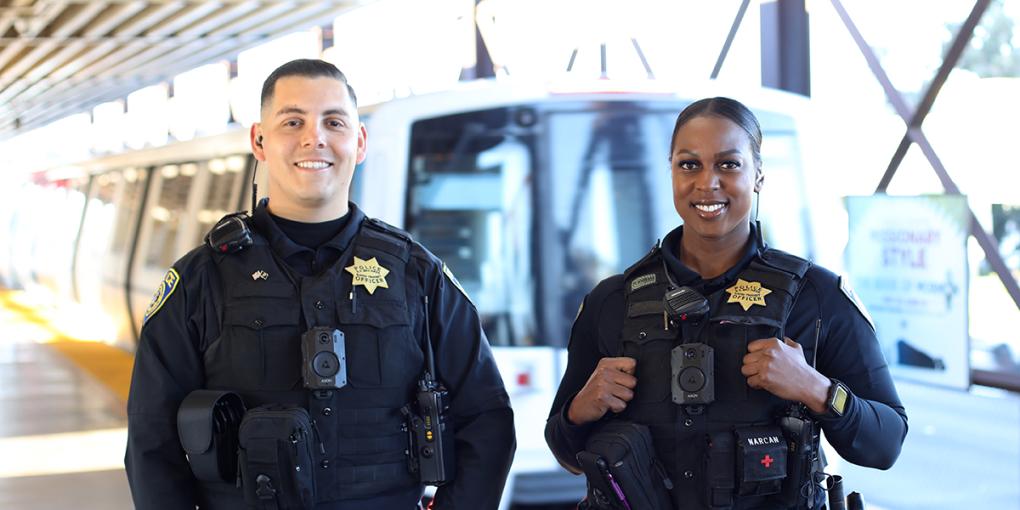
Commitment to Safety and Security
- Ensuring BART Police are riding trains more, increasing their visibility, and keeping riders safe by doubling officer presence systemwide.
- Average response time is down to 4 minutes.
- Increased patrols are yielding results by deterring crime and quickly apprehending perpetrators when incidents occur.
- 85% drop in cellphone snatches since 2019 shows our investments in rider safety are paying off.
- Progressive policing approach uses unarmed Crisis Intervention Specialists, Ambassadors and Fare Inspectors for additional patrols with experts in de-escalation.
- 7% of calls have been diverted from police to an employee with training in social work.
- Recruiting for all vacant officer positions and adding 19 additional officer positions once vacancies filled.
- Making trains even safer by eliminating near-empty train cars by shortening the least-crowded trains.
- Maintaining 4,000+ surveillance cameras to minimize response time and hold suspects accountable.
- LED lighting installed on platforms and in parking facilities to eliminate dark corners.
- Increasing transparency and community outreach to proactively address transit safety concerns.
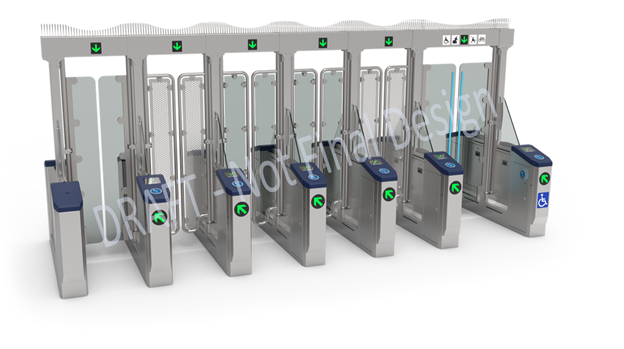
Commitment to New Fare Gates
- Taller, stronger fare gates to deter fare evasion will be installed.
- Pilot fare gates to be installed at West Oakland by the end of 2023.
- Complete installation of 700+ new fare gates systemwide by the end of 2025.
- Fare gates added to enclose elevators to further reduce fare evasion.
Commitment to a Clean Ride
- Doubling the rate of deep cleaning on train cars.
- Retiring all old trains.
- Adding nearly 66% more dedicated crews working to keep stations clean.
- Staffing restrooms at high-volume stations with attendants to guarantee cleanliness and safety.
Commitment to Adapt Service and Attract New Riders
- September 2023 schedule change brings our train deployment up to date by increasing emphasis on ridership growth opportunities and relying less on outdated commuting models.
- 50% increase in daily evening service.
- Eliminates 30-minute wait times on weekends and nights.
- Reduced platform wait times thanks to new scheduled transfers.
- Service on BART’s busiest weekday line, the Yellow Line, increases trains from every 15 minutes to every 10 minutes from Pittsburg/Bay Point to get drivers off congested highways 4, 680, & 24.
- New schedule improves reliability and better serves SFO and OAK Customer On-Time performance has improved to 91%; timed transfers have improved to 80% Canceled trips nearly eliminated.
- Increasing Clipper START fare discount for low-income riders to 50% January 1, 2024.
- Offering Clipper BayPass, where employers purchase all-you-can-ride transit passes for employees.
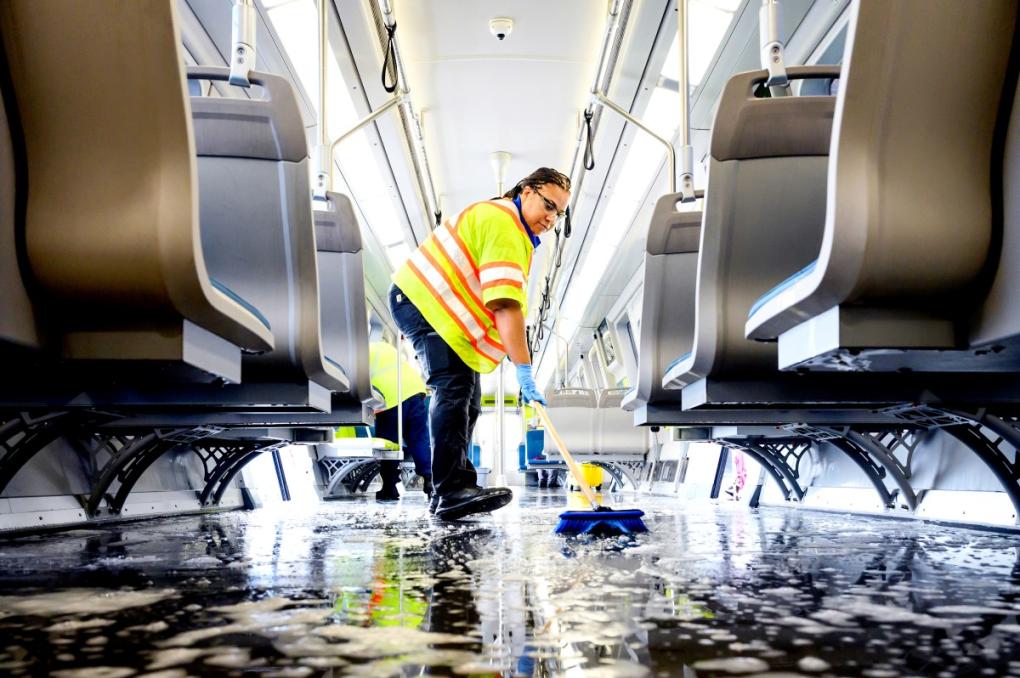
“If you haven’t tried BART in the last few months, I encourage you to ditch your car for the day,” said BART General Manager BobPowers. “We’ve made many improvements. From easy app-based payment to new escalators at our busy downtown stations, we’re proud of the improvements we are making every day. Most importantly, we’ve made a commitment to a cleaner, safer ride that guarantees BART remains the safest way to travel.”
MARTA
MARTA on Sept. 7 shipped off the first of two railcars bound for the Georgia coast and eventually the Atlantic Ocean.
MARTA is partnering with the Georgia DNR to contribute railcars from the agency’s original fleet as they are replaced by the new CQ400 railcars in coming years. The Reef Project deploys large objects to the bottom of the ocean that over time develop into reef habitats for marine wildlife.
According to MARTA, two older model railcars have been stripped of hazardous materials and contaminants. The dismantled railcars were then inspected and approved by the U.S. Coast Guard for deployment as artificial reef material. The first of the two railcars was loaded onto a truck at MARTA’s South Yard on Sept. 7 and will be delivered to the East Coast Terminal in Savannah on Friday, Sept. 8. The second will be picked up Monday, Sept. 11 and delivered on Tuesday, Sept. 12.
Once on the coast, and when conditions are optimal, MARTA say the railcars will be deployed by barge to Artificial Reef L, an established reef about two square miles in size, located approximately 23 nautical miles east of Ossabaw Island in about 55 to 65 feet of water.
Over time, the railcars will provide essential marine habitat for sea creatures, including popular sport fish and endangered sea turtles. While the substrate for the reef is manmade, the organisms that will grow on it are entirely natural and beneficial for the environment. Fish and other marine life, such as sea turtles, are likely to investigate the new habitat almost immediately. Corals, sponges, and other encrusting organisms will begin to take hold on the railcars in about one year and will continue to grow and improve the longer they are in the ocean. SCUBA divers and anglers can begin using the reef immediately.
According to MARTA, the railcars will join previously deployed materials, including U.S. Army M-60 battle tanks, barges, tugboats, New York City subway cars, and other manmade structures. Artificial Reef L was first created in 1976 as part of a network of 32 offshore reefs that the Coastal Resources Division has been building for about 60 years with an estimated 3 million square feet of reef created as of 2022.
DNR will document the deployment extensively with surface, underwater, and drone footage, as well as provide archival footage of previous deployments that have developed into full reef habitats. MARTA will make those video assets available for use.
“MARTA is thrilled to partner with DNR and be part of the Reef Project,” said MARTA Director of Sustainability Richard Thomas. “Reefing is the most affordable and environmentally responsible way to reuse retired railcars, and we hope to provide more railcars in the future as we make room for the new trains.”
Amtrak
Amtrak is “chipping away at the backlog of passenger cars laid up at its shops and plans to restore 63 more cars to its active fleet over the course of Fiscal Year 2024 (FY24), which begins on Oct. 1,” according to an Aug. 28 Rail Passengers Association report.
Larry Chestler, the executive who heads Amtrak’s long-distance business unit, told Rail Passengers President and CEO Jim Mathews on Aug. 25 that the FY24 plan would include bringing 48 cars back out of long-term storage and the overhaul backlog, plus another 15 cars restored from “wreck” status—and 12 of those 15 wrecks are “sorely needed” Superliners.
According to the Rail Passengers Association, the work began earlier this year as cars began to trickle back out to the fleet. The Capitol Limited already has additional Sleeper car space available for booking on the Amtrak website, and the Capitol—which has suffered through a single passenger coach and a single Sleeper during the summer travel season—should get that second Sleeper back this fall. Additional coaches could follow in the winter.
Overall, 23 of the 63 cars being restored in FY24 are Superliners. There are nine Transition Sleepers and five Sightseer lounges in the mix to be restored, and Chestler said that many of the FY24 restoration cars should be available for next summer’s heavy travel period.
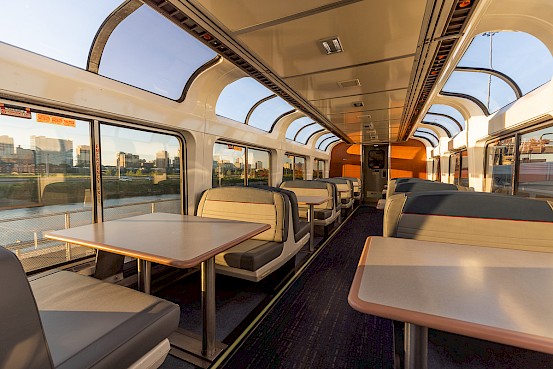
Rounding out the restorations, according to the Rail Passengers Association, are eight Viewliner I Sleepers and 18 Horizon Coach cars. Amtrak is using more Horizon cars than originally expected as problems with the newer Venture cars on the Midwest services created unexpected delays.
Meanwhile, Amtrak says the Superliner refresh is “going well,” and refreshed Superliner cars are continuing to make their way out into the active fleet. Superliner coaches in the refresh program should be finished by the end of this calendar year, and most of the remaining Superliner refresh program should wrap up throughout Fiscal 2024.
The most recent five-year equipment plan, which is based on FY21 inventory figures can be found here.
VIA Rail
VIA Rail on Sept. 7 announced the reintroduction of two trips between Toronto and Ottawa and one round trip between London and Toronto, starting this October.
“The ongoing progressive introduction of VIA Rail’s 32 new trainsets is already yielding positive results, as recent increases in equipment availability, coupled with intense recruitment and training efforts, are now allowing us to reintroduce these high-demand frequencies,” said VIA Rail President and CEO Mario Péloquin. “As we continue to strike a balance between meeting our passengers’ evolving travel needs and deploying our limited resources, we remain committed to offering the most convenient, accessible and sustainable service to the highest number of Canadians.”
According to VIA Rail, passengers can start booking their trips on train 82/83 as of Sept. 7 and on other returning frequencies over the next week.
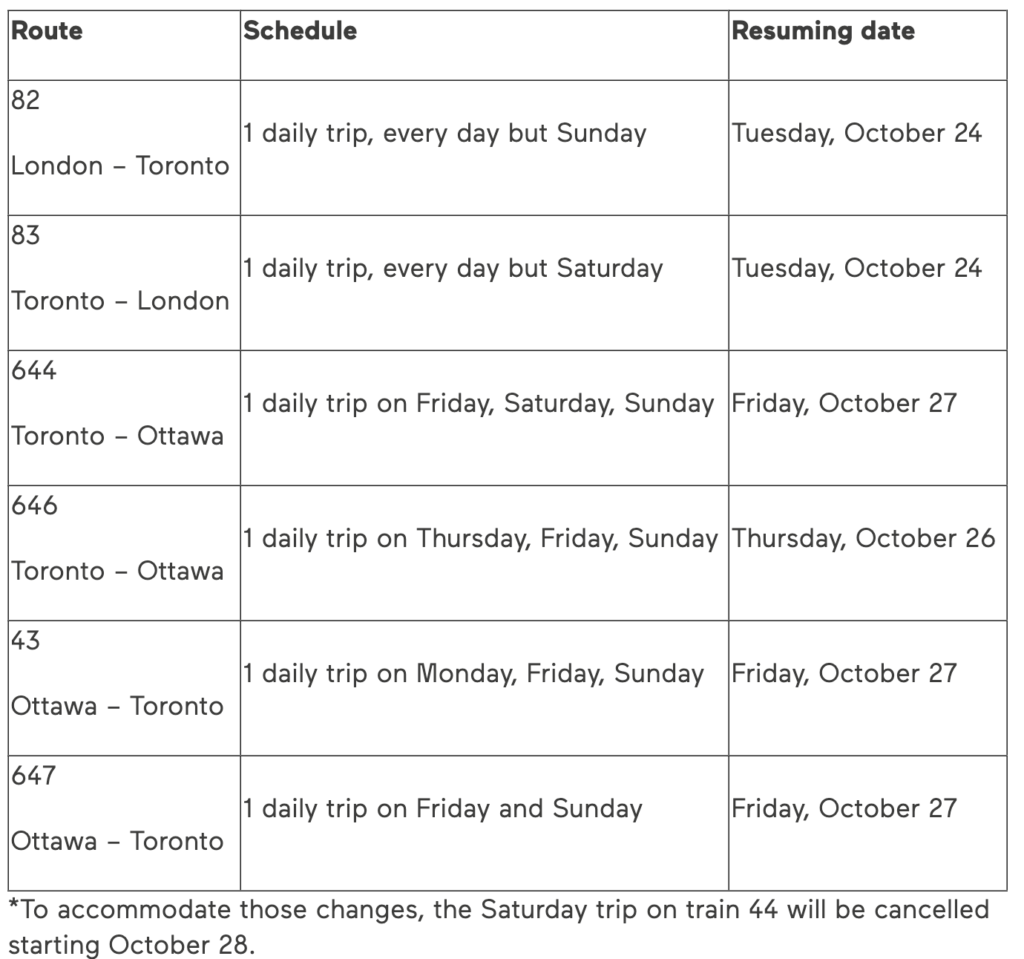
WMATA
WMATA announced that beginning Monday, Sept. 11, the agency will roll out its eleventh service increase since last summer.
According to WMATA, while ridership continues to grow, it remains below pre-pandemic levels, therefore the agency says it will “monitor ridership trends and continue to assess the need for any future service adjustments based on ridership demand.”
With ridership trending higher during the morning and evening commuting hours, WMATA will boost peak service on the Red, Blue, Silver, Green, and Yellow lines to meet demand and ridership growth as more customers return to the office and other activities. Trains on those lines will run more frequently from approximately 7 a.m. – 9 a.m., and from approximately 4 p.m. – 6 p.m. Exact times of peak service will vary by station.
Orange Line trains will continue operating every 10 minutes all-day, seven days a week, and every 15 minutes after 9:30 p.m.
WMATA is now running more train service than at any time in its 47-year history.
“Metro is working hard to provide frequent, reliable service to help move our region and grow our economy,” said WMATA General Manager and CEO Randy Clarke. “This service increase is another win for our customers and a testament to Metro staff who have worked hard to restore safe, frequent service. We have great service levels available, and we hope that our region and customers use the system, and we see ridership continue to grow.”
Service frequencies beginning Monday, September 11:

The service increases, WMATA says, will add more than 6% more train trips than today, and 60% more daily train trips than at this time last year. Additionally, this service change represents the agency delivering 89% of budgeted FY24 service levels.
OC Transpo
A report for the Transit Commission shows that OC Transpo is projecting a $40.8 million budget deficit in 2023, “as the transit service continues to experience lower transit ridership and fare revenue post COVID-19 pandemic,” according to a CTV News report.
According to the report, the Transit Commission approved the 2023 budget with a projected $39 million deficit, “hoping the upper levels of government would provide additional funding under the Safe Restart Agreement to cover transit deficits linked to COVID-19.” However, as of today, CTV News reports, the city of Ottawa has received no commitment from the Ontario and federal governments for additional funding.
According to the CTV News report, fare revenue is projected to be $12.3 million below budget this year, resulting in a $51 million revenue shortfall. Staff say $10.534 million in operational savings will offset the transit revenue shortfall due to COVID-19.
“The forecast surplus by year-end is heavily based on reduced compensation expenditures from current vacancies and a pause on hiring, lower O-Train Line 1 service maintenance costs due to performance deductions per the agreement with (Rideau Transit Maintenance) and lower fuel costs,” the report says.
“These savings are estimated to be partially offset by higher fleet maintenance costs and higher Para Transpo costs.”
According to CTV News, the report notes any potential savings from the shutdown of the Confederation Line for 28 days in July and August for maintenance issues and the delayed opening of the Trillium Line “cannot be estimated at this time.”
“Various strategies will continue to be leveraged to address the forecasted deficit or reduce and/or remove the forecasted year end deficit,” staff say.
According to CTV News,the report says savings have been found through a “discretionary spending freeze, a review of capital project spending and the delayed opening of the Trillium Line,” which “would result in unspent operating funds in 2023.”
Staff say the city “continues to advocate for funding from the upper levels of government.”
According to the CTV News report, “OC Transpo is looking at several options to boost revenue and decrease losses, including a route service review as part of the 2024 budget process and the launch of on-demand transit in Blackburn Hamlet this fall. Staff are also proposing a subscription-type fare option for hybrid workers, allowing riders to purchase a discounted number of fares for a certain period.”
Staff are already proposing fare hikes and service cuts, including aligning bus routes to “current ridership levels” in 2024 to address a revenue shortfall. The 2024 budget directions report recommended a 2.5% hike in transit fares and a 2.5% increase in the transit levy on property taxes, according to the CTV News report.
